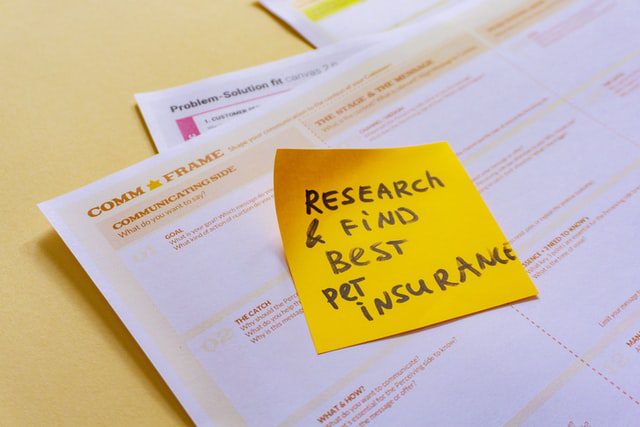Looking for the best pet insurance can be hectic. Choosing the right one is not easy with so many pet insurance providers, especially if it is your first time. The policies will vary on the level of coverage you choose. Furthermore, every company has its conditions, additions, and exclusions to its cover, which means the insurance cover policy depends on the company. That is why it is critical to ensure you compare various pet insurance policies so that you get to choose a suitable one that suits your budget and needs.
Therefore, there are various things you need to keep in mind when taking out pet insurance. Fortunately, after reading this ultimate guide, you will be able to choose the perfect insurance policy for your pet. Keep on reading.
Table of Contents
Types of Plans
Before you start searching for a pet insurance policy, you need to know that there are different types of plans. Generally, the main plans cover illness and accidents. Due to age restrictions, your pet may only be eligible for an accident plan after a specific age. Also, you can opt for general wellness plans for an extra monthly fee if available.
While choosing a pet cover, ensure it covers common accidents such as broken legs and cuts. Also, go for a cover that will help pay for surgery required to remove swallowed objects. It should also cover chronic diseases like diabetes, cancer, and curable conditions. Start by comparing these affordable coverage options to see whether there is one that suits your pet and budget. These pet insurance experts have done the hard work of searching through the internet for you.
Insurance Policies Terms You Should Know About
Deductible
This is the amount you must pay before the insurance company releases a claim. The deductible changes annually or applies to specific conditions over a pet’s life based on the plan you choose. For instance, if your pet has cancer, some policies will charge a single deductible only for related treatment over the lifetime of your pet, while other companies charge the deductible each year.
The Waiting Period
This is the time you have to wait until the coverage starts. Most insurance policies will not cover your pet if any problem occurs during the waiting period. They will consider it a pre-existing condition, so the pet is not covered. The length will depend on the pet insurance company, although it is usually between 14-30 days. Of course, shorter is better.
Benefits
In this case, benefits are the amount of money an insurance company will have to pay you for the covered incident or within a given period, depending on how much you have paid. Better benefits pay as much as they can for a covered incident; others may have a pre-incident, lifetime, and annual limits for illness or accident claims. The term benefit is sometimes used interchangeably with ‘coverage.’ Therefore, while comparing the policies, ensure you choose one with good benefits.

Read Pet Insurance Policy Requirements
Age: It is important to check out the plan’s restrictions to know whether or not your pet qualifies for the cover in terms of age. Every pet policy has a minimum age requirement, with most starting at eight weeks, but you can also find some that accept 6 or 7-week-old pets. Also, check the upper age limits if your pet is a senior. Some insurance policies have no upper age limit, but you must enroll your pet before a certain age; for example, from 9 to 14 years of age. When your pet is above these ages, the policy might only cover basic wellness checkups, not illness.
Breed: Although most pet insurance policies will not necessarily exclude certain species, sometimes they limit coverage based on breed-specific conditions. ACL surgery and Hip Dysplasia are the main restrictions for medical pet policy.
Vet exams: Check whether you must have a vet exam for the previous year before registering your pet for a cover. Even if it is not needed, taking your pet for a vet exam as soon as you can after registering for a policy is a good idea. This is because insurance providers will use the first exam after registering to determine whether your pet is healthy.
Consider the Coverage Levels
Nowadays, veterinary costs have increased, and sometimes, low coverage limits may not be realistic. So, go for a plan covering the actual costs of unexpected accidents or illnesses. Some insurance companies have a huge collection of high coverage limits, such as unlimited coverage, so that you and your pet are covered well if unexpected things happen. Choosing the right pet insurance requires some research. Although it can be confusing, it is worth it. So, follow this guide while picking the best pet insurance for your pet.
Here is a pet information printable that you can download for your records and for your pet sitters.
Featured Photo by Daria Nepriakhina 🇺🇦 on Unsplash




